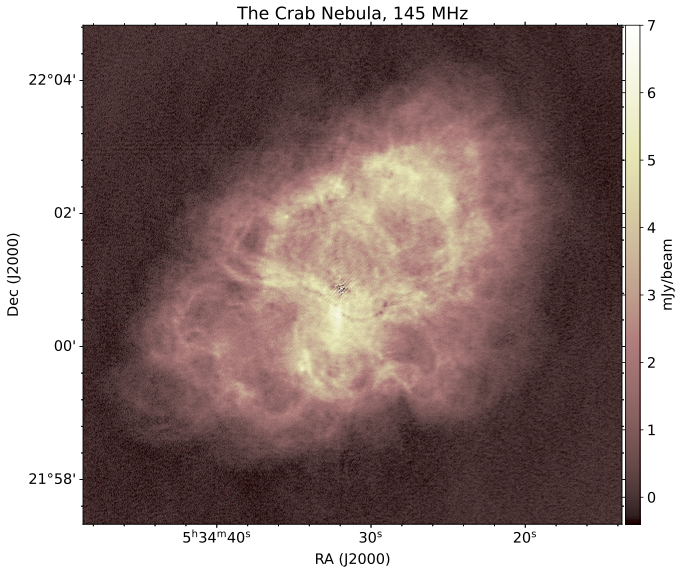 © Maria Arias
© Maria Arias
The Crab Nebula as seen with the High Band Antennas of the International LOFAR Telescope. This map has a central frequency of 145 MHz, an angular resolution of 0.43′′ × 0.28′′, an rms noise of 260 μJy/bm−1, and a dynamic range of 61,000; the area displayed here has a size of 8′ ×8′. Reference: Arias et al, 2025. ArXiv: https://arxiv.org/abs/2506.19460
 © Maria Arias
© Maria Arias © Maria Arias
© Maria Arias